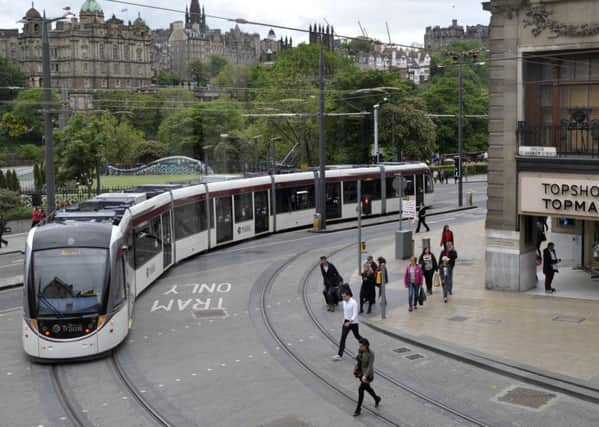'˜Demanding' Edinburgh public made trams a bigger challenge


Jim Harries, who played a key role on tram projects in Manchester, Birmingham, Nottingham and Sheffield, London’s Docklands Light Railway and British Rail, told the tram inquiry: “Edinburgh as a city was the most challenging environment that I have experienced.
“It’s a wonderful historic city and it wasn’t laid out with trams in mind. So putting a tram system through narrow streets in a very densely populated area will be challenging. It’s also a very historic city, with lots of wonderful buildings and heritage that we do not wish to disturb.
Advertisement
Hide AdAdvertisement
Hide Ad“The people of Edinburgh, compared with a lot of other cities, are probably more demanding and overall perhaps more educated than elsewhere.
“When you put those factors together, and it results in very challenging environment for a tram project.”
He said other bodies, such as Forth Ports, the SRU and Edinburgh Airport, had also proved “demanding”.
“I went to several public meetings, and it was hard work to convince everybody that we were doing the right thing.”
Advertisement
Hide AdAdvertisement
Hide AdMr Harries, who was project engineer for Transdev, the firm initially chosen to operate the trams, also said some of the key players in the trams did not seem fully behind the project.
“In other projects I’ve been involved with, the ultimate client and the contract chain are all absolutely behind the delivery of the project.
“I did not feel that either the council or Lothian Buses were pushing for the delivery of the project as I had hoped they would.”
In a document shown to the inquiry, Mr Harries had rated the chances of the project being completed on schedule as “zero” nearly 18 months before the main contract was even signed.
Advertisement
Hide AdAdvertisement
Hide AdAmong the problems he listed at that time, January 2007, were: “[Council tram firm] TIE have a long way to go to become an informed client; too much reaction and ‘shooting from the hip’ and not enough planning; not enough of the right level of competence in the right places.”
He said he had been surprised when Transport Scotland pulled out of direct involvement with the trams in 2007. “I felt that TS were distancing themselves from a project that was not going well. In my view, their experience in governance of major transport projects would have helped in forcing key issues to be addressed.”
Asked how he felt about the project when he left in February 2008, Mr Harries said: “The project would not be delivered to the intended programme. Costs would escalate and be out of control.”
He said TIE had “a very challenging task in a challenging city” and was “a huge organisation when compared with other tram promoters in the UK”. He also described it as “immature in its systems and its approach”.
Advertisement
Hide AdAdvertisement
Hide Ad“There were some very good people, but the organisation was too big, poorly regulated and unwieldy. And some members of TIE appeared to be there solely for their own ends.”
He said the Edinburgh trams project had differed from those elsewhere in that he was “working with a huge team where it is not clear who is doing what”; there was a “lack of feeling of being effectively led and driven to deliver against a challenging but achievable programme”; and a “lack of understanding of tram projects at a senior level within the client body”.
And he listed the main reasons for the project’s failure to deliver on time as lack of project ownership by the council and Lothian Buses; multiple stakeholders in a historic city who did not accept the benefits of the tram system; and lack of integrated programme management by TIE.
But Mr Harries said: “I believe what Edinburgh has now is an excellent tram system. It operates well, it’s reliable and technically it is good so I think Edinburgh is in a good place now.”
Advertisement
Hide AdAdvertisement
Hide AdAnd he had encouraging words about the proposed extension of the line down Leith Walk and on to Newhaven, saying the existing tramline was “a sound basis for expansion”.
He said: “You have sufficient trams to put on the route, a lot of the utility work has been done so it should be a straightforward process.”